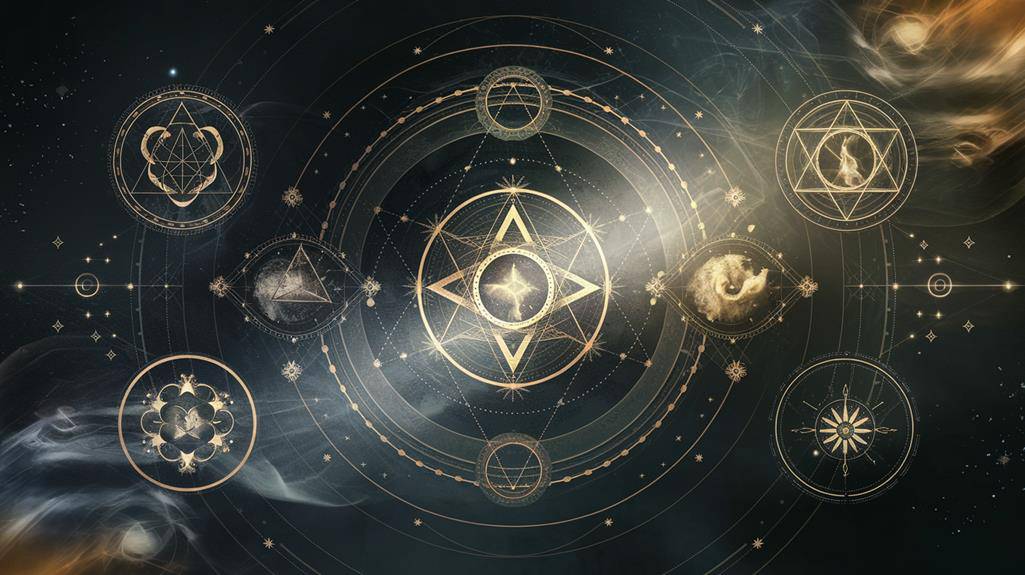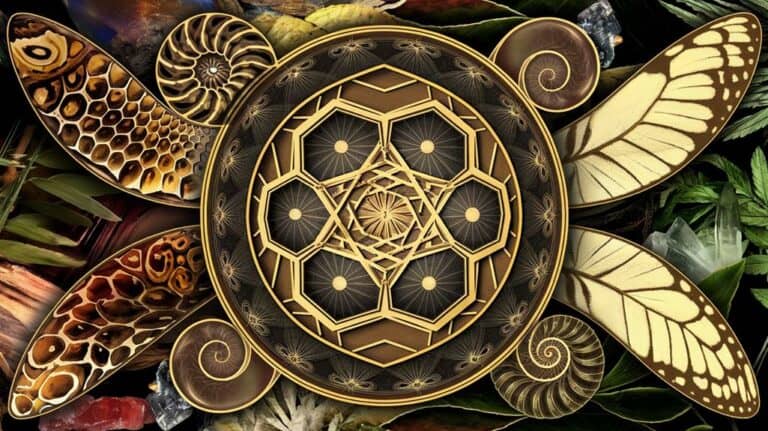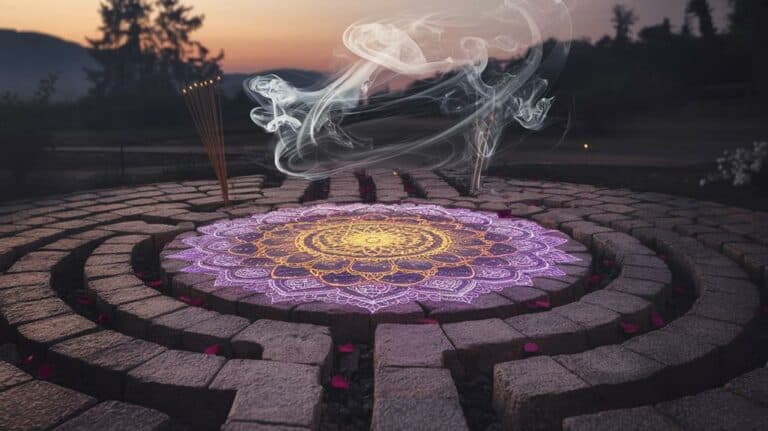8 Alchemical Symbols Explained
You’ll find that alchemical symbols are far more than ancient mystical drawings—they’re a sophisticated language that bridges the material and spiritual worlds. While modern chemistry has replaced many alchemical practices, these enigmatic symbols continue to influence art, psychology, and spiritual traditions today. From the elusive Philosopher’s Stone to the serpentine Ouroboros, each symbol carries layers of meaning that reveal the interconnected nature of all things. As you explore these eight fundamental symbols, you’ll uncover how ancient alchemists encoded their wisdom about transformation, both of matter and consciousness.
The Philosopher’s Stone
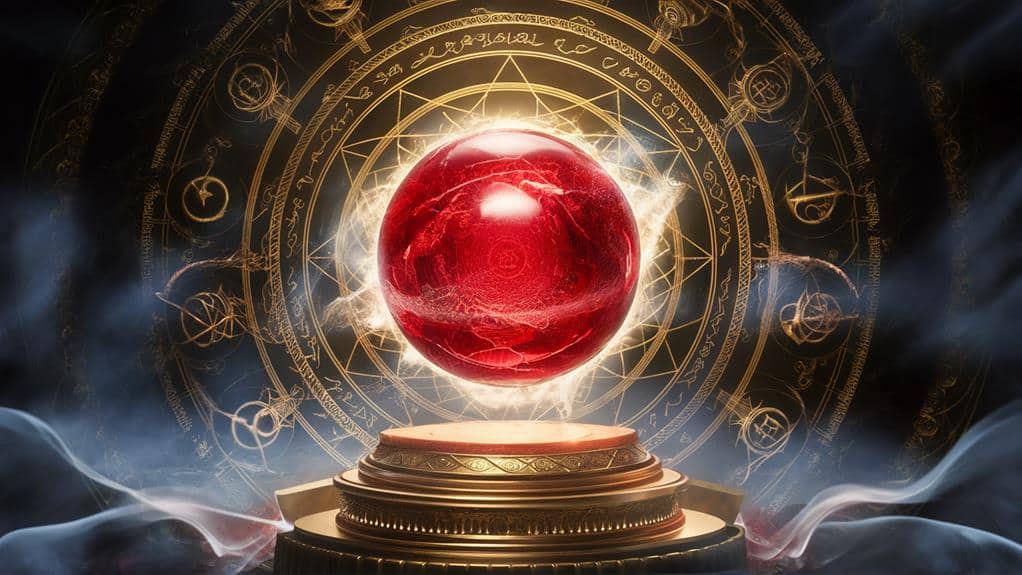
Among the most coveted alchemical symbols, the Philosopher’s Stone represents the ultimate goal of transmutation. You’ll find this enigmatic symbol depicted as a red stone or powder, though its true nature transcends physical form.
It’s said to hold the power to transform base metals into gold, but you’ll discover its deeper meaning goes far beyond material wealth. As you investigate ancient texts, you’ll understand why alchemists viewed the Stone as a metaphor for spiritual transformation.
It’s the embodiment of perfection, the union of opposing forces – masculine and feminine, sun and moon, spirit and matter. You’re not merely seeking a physical object; you’re pursuing the pinnacle of personal evolution.
The Stone’s symbolism speaks to your innermost desire for transformation. When you contemplate its meaning, you’ll recognize that the true gold isn’t found in your crucible but in your consciousness.
It’s the force that can transmute your ordinary awareness into enlightened understanding, your mundane existence into something extraordinary. You’re not just studying an ancient symbol; you’re exploring the very essence of transformation itself.
Four Elements
The foundation of alchemical transformation, like that sought in the Philosopher’s Stone, rests upon the four classical elements: Earth, Air, Fire, and Water.
You’ll discover that each element carries its own profound symbolic weight in the alchemist’s quest for transformation. Earth represents the solid, tangible domain of physical existence, while Air embodies the intellectual sphere of thought and spirit. Fire burns as the active principle of change and purification, and Water flows as the medium of dissolution and rebirth.
As you explore deeper into these elemental mysteries, you’ll find that they’re more than mere physical substances – they’re the very forces that shape both matter and consciousness.
In your own spiritual work, you’ll recognize Earth in your physical body, Air in your thoughts, Fire in your will, and Water in your emotions. Each element exists in perfect balance with the others, creating a quaternary that reflects the wholeness of existence.
You’ll notice these elements at work in every aspect of your life, from the changing seasons to the cycles of transformation within your own being.
Salt, Sulfur, and Mercury
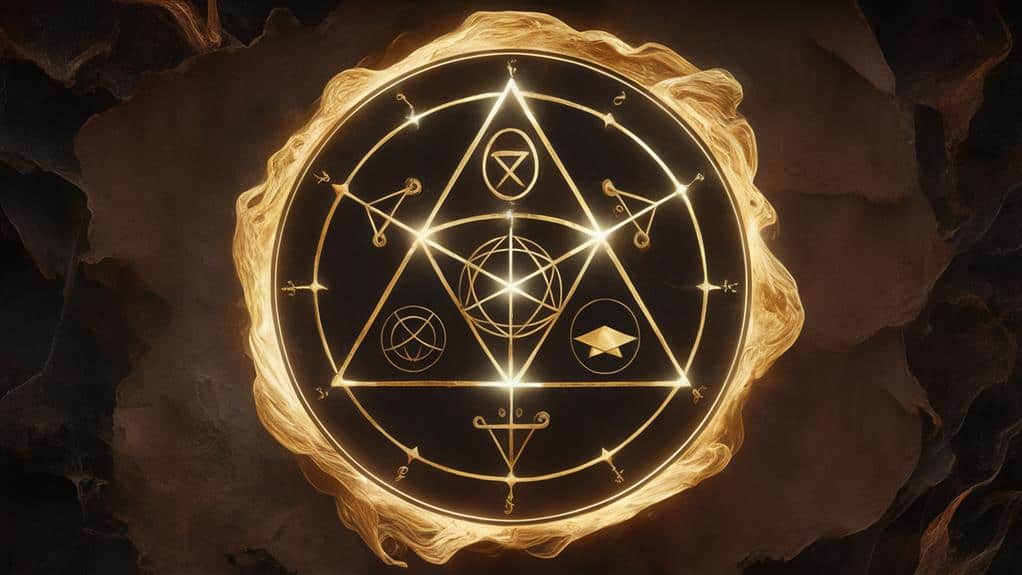
Beyond the four elements, alchemical tradition recognizes three essential principles: Salt, Sulfur, and Mercury. These fundamental triad forms the cornerstone of alchemical transformation, each representing aspects of your own nature that you’ll discover on your path to enlightenment.
When you understand their profound symbolism, you’ll reveal deeper layers of alchemical wisdom.
Salt embodies your physical form and crystalline consciousness, representing the stable, grounding force that connects you to Earth’s material domain.
You’ll find Sulfur manifesting as your soul’s animating fire, the driving force of will and desire that propels your spiritual evolution.
Mercury, the messenger principle, serves as the mediator between worlds, flowing through your awareness as the bridge between physical and spiritual dimensions.
Within your own being, these principles don’t exist in isolation – they’re constantly dancing, merging, and transforming.
You’ll notice how Salt provides structure to Sulfur’s expansive energy, while Mercury facilitates their harmonious interaction.
The Ouroboros
Ancient alchemists revered the Ouroboros – a serpent consuming its own tail – as one of their most profound and enduring symbols. As you explore this mystical emblem, you’ll discover it represents the eternal cycle of creation and destruction, where endings seamlessly flow into new beginnings.
Within its circular form, you’ll find the essence of infinity, wholeness, and the perpetual dance of transformation that governs all existence.
When you contemplate the Ouroboros, you’re connecting with a primordial truth that’s shaped human consciousness across cultures and epochs. Its serpentine form illustrates nature’s fundamental cycles – life emerging from death, order arising from chaos, and wisdom born from experience.
You’ll notice how it binds opposing forces: the creature both destroys and sustains itself, embodying the paradox of existence.
In your alchemical practice, the Ouroboros serves as a powerful reminder that everything you seek already exists within you. It’s a symbol of self-reflection and spiritual completion, suggesting that true transformation isn’t a linear journey but a continuous cycle of inner discovery and renewal.
Seven Planetary Metals
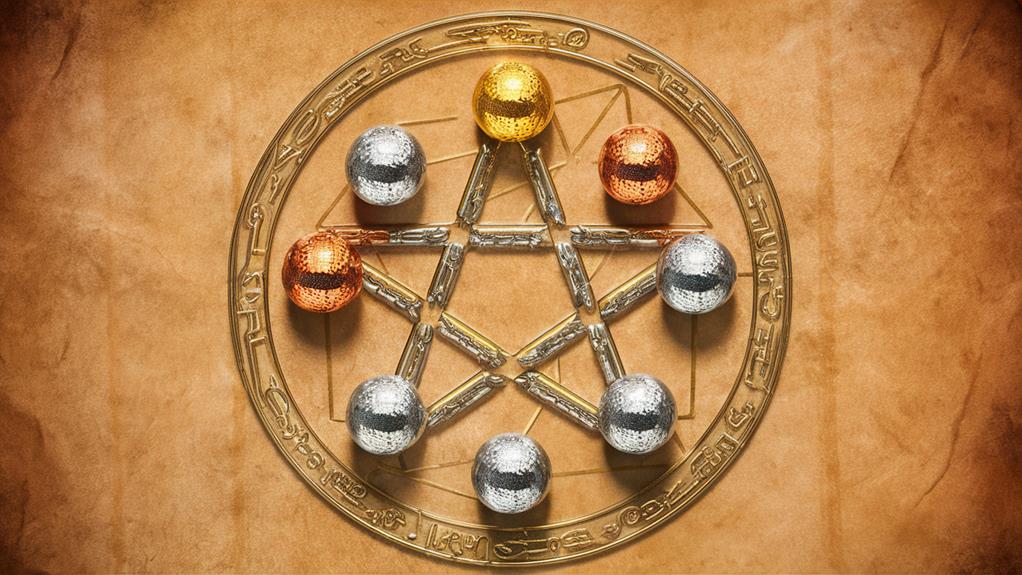
Medieval alchemists linked seven primary metals to celestial bodies, creating a system that bridged earthly materials with cosmic forces. In this mystical framework, you’ll discover how gold resonates with the radiant Sun, while silver channels the Moon‘s ethereal qualities.
Mars, the warrior planet, finds its expression through iron’s strength, while Mercury’s quicksilver nature mirrors its namesake’s fluid movement through the heavens.
You’ll find that copper, sacred to Venus, captures beauty and harmony in its reddish gleam, while tin embodies Jupiter’s expansive wisdom and leadership.
Saturn, the most distant of the classical planets, manifests in lead’s heavy, grounding presence. As you work with these metals, you’re tapping into an ancient understanding that everything on Earth reflects the cosmos above.
When you hold these metals in your hands, you’re connecting with the same profound insights that guided alchemists through centuries of spiritual and material exploration.
This system isn’t just about physical properties – it’s a key to understanding how celestial energies flow through the material world, affecting everything from your daily life to your spiritual journey.
Fire and Heat Symbols
Throughout alchemical traditions, fire and heat symbols played an important role in representing transformative processes. You’ll find these powerful emblems depicted through triangles pointing upward, radiating lines, and spiraling flames – each capturing the essence of nature’s most dynamic force.
When you’re studying ancient texts, you’ll notice how these symbols appear alongside vital operations that require thermal transformation, marking the sacred dance between matter and energy.
As you explore deeper into alchemical symbolism, you’ll discover that fire symbols aren’t merely about physical heat – they represent spiritual illumination and the burning away of impurities in your soul’s journey.
The triangle of fire, pointing skyward, beckons you toward higher consciousness, while the radiating lines remind you of the sun’s life-giving energy.
You’ll encounter variations of these symbols in manuscripts where they mark stages of the Great Work: calcinatio (burning), combustio (combustion), and incineratio (incineration).
Each symbol carries within it the promise of transformation, suggesting that you, too, must pass through the refiner’s fire to achieve your highest potential.
Processes of Transformation
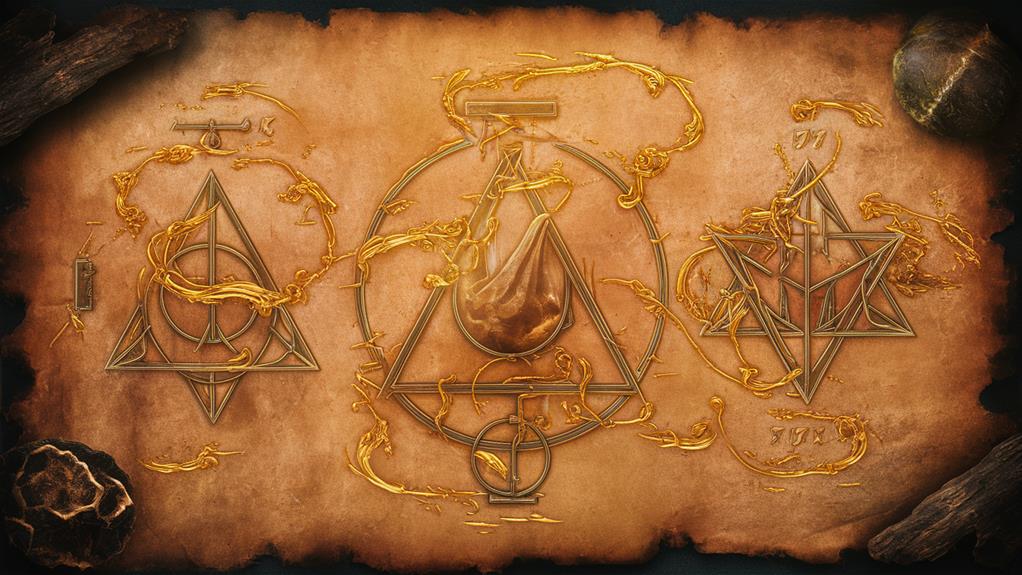
Central to alchemy’s core principles are the processes of transformation – intricate sequences of physical and spiritual operations that promised to transmute base materials into higher forms.
You’ll find these sacred procedures meticulously documented in ancient texts through symbols that reveal the cyclical nature of matter’s evolution. As you explore deeper into these mysteries, you’ll discover how each process mirrors your own potential for inner transformation.
The fundamental operations you’ll encounter include calcination, where fire reduces substances to ash; dissolution, where water breaks down rigid structures; separation, where you’ll distinguish pure from impure; conjunction, where opposing forces unite; fermentation, where matter undergoes spiritual awakening; distillation, where essence rises from the mundane; and coagulation, where wisdom crystallizes into permanent form.
Each stage represents a vital step in your journey toward understanding nature’s hidden truths.
When you work with these transformative processes, you’re not just manipulating physical matter – you’re engaging with universal principles that govern both material and spiritual evolution, connecting you to the timeless wisdom of those who sought enlightenment through the royal art.
Vessels and Equipment
The alchemist’s laboratory housed an array of specialized vessels and equipment, each designed to facilitate specific transformative processes.
You’ll find the athanor, a tower-like furnace that maintained constant temperatures for extended periods, enabling you to nurture your philosophical egg through its stages of transformation.
Within these sacred spaces, you’ll discover alembics – those elegant glass vessels with long, curved necks that separate essence from matter through the art of distillation.
As you explore deeper, you’ll encounter the crucible, where base materials endure the trial by fire, and the retort, whose curved neck carries vapors through cycles of condensation and purification.
The cucurbit and the pelican – vessels of circular wisdom – invite you to witness the endless cycles of solve et coagula.
In your hands, these tools become bridges between the material and spiritual domains, each one carrying centuries of accumulated wisdom in its form and function.
Through these instruments, you’ll grasp how ancient alchemists sought to mirror nature’s own processes of refinement and transformation, creating microcosmic laboratories where heaven and earth could meet.



